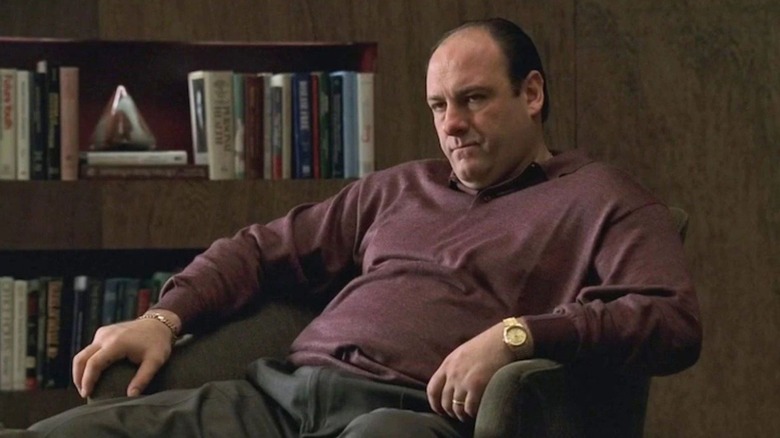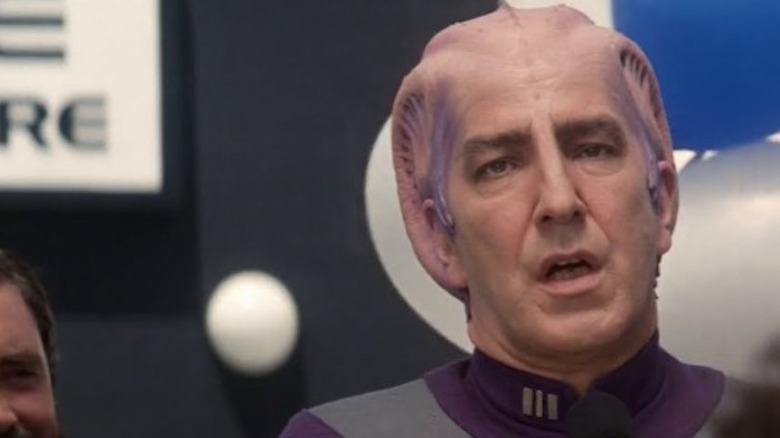How New Streaming Bundles Could Change The Way You Watch Movies
For movie and television lovers operating on a tight budget, the monthly hit you take when your subscriptions to *deep breath* Prime Video, Netflix, Max, Disney+, Hulu, Apple TV+, Paramount+, Peacock, The Criterion Channel, Shudder, and others sure does, to quote M. Emmett Walsh's machine shop ear-bender from "Raising Arizona," take a bite. It's especially frustrating because each streaming service boasts at least a handful of excellent series that, once they get their hooks in, keep you clamoring for more. And if you're any kind of sports fan, you're probably still a cable/satellite subscriber or forking over $80 a month for a service like Fubo or YouTube TV.
And when you see Netflix and Disney+ hiking their prices by up to three dollars a month, you might have some hard decisions to make.
Streaming companies have been hearing your gripes about rising subscription prices, and over the last year or so, most of them have responded by offering more affordable packages with one caveat: You've got to sit through somewhere in the neighborhood of four minutes of commercials per hour. As of today, it appears some of the major streamers are willing to go one step further and bundle their product with rival platforms.
We're not talking about in-house bundling à la Disney+/Hulu/ESPN+. The second and third most popular streamers have agreed to a landmark deal that will result in a massive discount for subscribers. Is there a catch? Of course there's a catch. But it's one I think a majority of viewers will go along with. Let's dig into the details as we have them at present.
Paying less for more commercials
According to The Hollywood Reporter, Verizon has reached an agreement with Netflix and Max to bundle both streamers at a very friendly $10 per month. Amazing, huh? If you enjoy commercials randomly interrupting your viewing of "Barbie" or "The Crown," absolutely!
Individually, Netflix's ad tier costs $6.99, while Max's tier runs $9.99 (though they temporarily slashed that rate to $2.99 as part of a Black Friday deal last month). That's a 40% discount, one that should boost subscription numbers given that Netflix's ad tier has proven popular.
While this is an encouraging development for Netflix and Max, convincing subscribers to fork over even a combined $10 a month for an ad-supported service feels a bit like theft. It's also worrisome for the future of sites like YouTube or TikTok, where you can hop on and watch hours of random videos, occasionally broken up by ads, for free. If people are willing to pay to watch a show like "The Sopranos," which aired commercial-free for a price on HBO, with ad breaks that the series was never intended to accommodate, why should YouTube give away millions of videos for free? Why shouldn't they hit you up for a seeming pittance of, say, 99 cents a month, especially when you know Zoomers and, presumably, subsequent generations digest media in multi-screen chunks? Can you imagine your life without access to YouTube? I can't. We're ripe for the mugging.
Meanwhile, if ad-free subscriptions to major streamers with industry-standard image quality keep rising (one year of Max's 4k "Ultimate Ad-Free" package currently costs $199.99), will people settle for substandard presentations that wreck the intent of the works' creators?
Getting distracted from the wonder
Baby boomers, Gen X-ers and many Millennials can recall a time when you were captive to cable television and your physical media library. If you wanted access to commercial-free movies on HBO, Showtime and whatnot, you paid an extra but not exorbitant monthly fee. And when you watched a film on TNT via your reasonably priced basic cable subscription with commercial interruptions, you made reasonable concessions; you knew the violence and profanity of "Die Hard 2" were going bye-bye (to be replaced by endearingly nonsensical utterances like "Yippee kai-yay, Mister Falcon").
When streamers put video stores out of business, we made unreasonable concessions. We gave algorithm-driven techies the power of curation. We surrendered the pleasure of browsing video store shelves, where you could step back and scan dozens of titles in a matter of seconds rather than flip through maybe six algorithm-determined titles at a time. And this may sound trivial, but the most damaging aspect of streaming video was how it removed the extra step of getting up from your couch and inserting a piece of physical media into a media player. You don't have to be choosy.
This has resulted in the further devaluation of movies as an artform, and a shrugging embrace of advertising as a necessary evil. Most mainstream movies, given their conventional three-act structure, can survive eight minutes of commercials, but imagine getting ripped out of a meditative, long-take masterpiece like Tsai Ming-liang's "What Time Is It There?" by a 30-second spot for a local personal injury lawyer. Why would you pay for that? The answer is that you treat movies as visual clutter while you cycle through your TikTok feed with a soccer game on in the background. Commercials are acceptable noise, and you'll pay $10 because the new, numbing normalcy is worth it. You'd be lost without it. But, oh, the savings!


